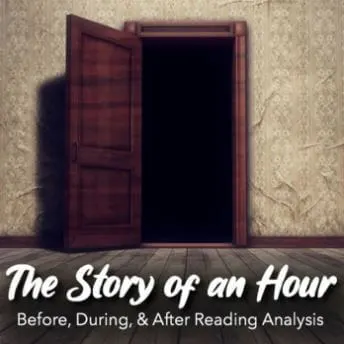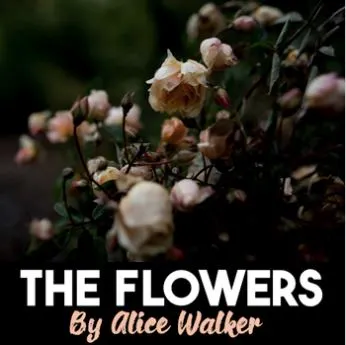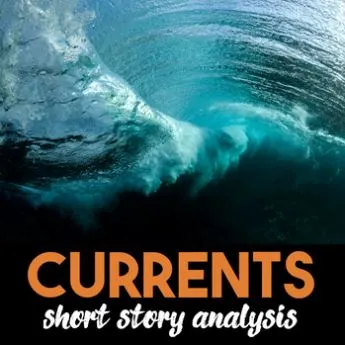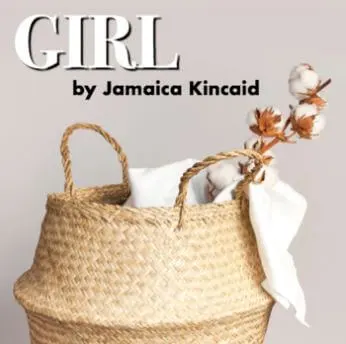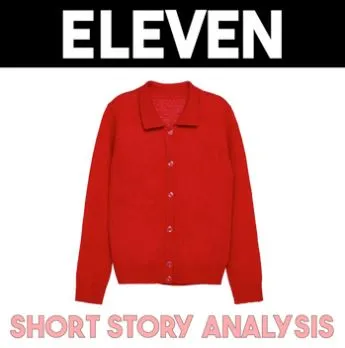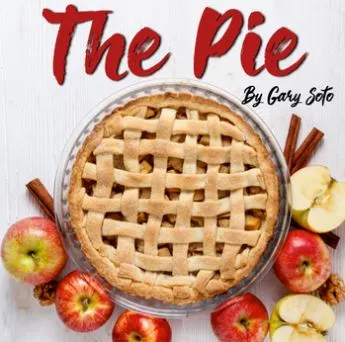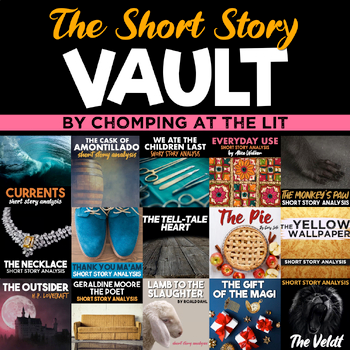As teachers struggle to make the most of every minute in the classroom and appeal to students’ diminishing attention spans, sometimes size does matter when it comes to reading selections. Even short stories can be daunting for reluctant high school readers. “It’s so long!” students may moan when presented with traditional anthology classics like “The Most Dangerous Game,” at 8,013 words or “An Occurrence at Owl Creek Bridge” at 3,768 words.
Shorter works of fiction are no less rigorous than their longer counterparts. Flash fiction is a genre of literature that demonstrates craft elements and packs thematic punches with a tight word count. While the definition varies, flash fiction most often refers to pieces under 1,000 words but possibly up to 2,000. Average readers can complete 1,000 words in approximately 3.3 minutes if they’re reading at a speed of 300 words per minute, making flash especially appealing.
Students are often more likely to completely read pieces that take under five minutes to finish. It’s also much easier to encourage and facilitate the multiple readings that are often necessary for students to fully understand and explicate a complex text.
Flash fiction selections are great as bell-ringer readings while still being rich enough to settle in for long discussions of craft and theme. You can also frontload longer works of fiction with these little pieces. Since they’re all delightfully short, they’re easy to slide into an existing lesson play, or you can build a day’s lesson around one. Finally, the brevity of these pieces will allow you to make copies on only one or two sheets of paper and work on annotating in class. Here are twenty that students will love.
20 Super-Short Stories Your High School Students Will Love
- “The Story of an Hour” by Kate Chopin
This story is popular with teachers not only because it weighs in at just over 1,000 words, but also because it’s replete with literary elements to demonstrate craft. In the story, a young wife, Louise Mallard, is informed that her husband is dead. Rather than mourning, she retreats to her room alone to quietly and joyfully contemplate a life of freedom without a man to dictate her life. The story takes a twist, however, when her husband returns home, oblivious to the news of his death. The shock brings on a heart attack and instant death, and everyone assumes the wife’s heart gave out from the happiness of seeing her husband alive and well. The readers will know better, however, what the source of the “joy that kills” actually is.
Chopin’s trim little story is a masterclass in pacing, dramatic irony, and characterization. Students from middle school up to AP English Literature can find richness and meaning in the text, even after multiple readings.
- “The Flowers” by Alice Walker
The plot is simple and horrifying: Myop, the child of Black sharecroppers, goes for a walk in the forest, gathers flowers, accidentally steps on an old skull, and finds the remains of a lynched man. At under 600 words, this compact piece is perfect for repeated readings for analysis of Walker’s syntax along with other elements such as plot structure, characterization, and symbolism and themes of racism and loss of innocence.
This piece pairs beautifully with works by such authors as Toni Morrison, Zora Neale Hurston, and Alice Walker herself. Students will enjoy discussing the symbolic significance of the shift from the farm to the woods, the juxtaposition of light and dark, the flowers, and, of course, the skeleton. They can also explore how Walker creates an entire archetypal hero’s journey in less than one page.
- “Birthday Party” by Katharine Brush
At a lean 312 words, “Birthday Party” is rich with elements of characterization and detail. It centers on a scene in a restaurant with a wife having a special dinner for her husband’s birthday that doesn’t go the way she expected or wanted.
There are shifting points of view within the piece that are rich for classroom discussion about perspective. It can also be used for a creative writing model in rounding out a scene and using specific details to illustrate character. This story was the 2005 AP English Literature Free Response Question 2.
- “Currents” by Hannah Bottomy Voskuil
This story is just under 300 words and is told backward. It’s the story of a drowning incident at a beach, but the inverted plot makes it interesting for students to discuss narrative arcs, syntax, detail, and characterization.
Students can also try their hand at writing their own backward story, using “Currents” as a model.
- “Being the Murdered Homecoming Queen” by Cathy Ulrich
“The thing about being the murdered homecoming queen is you set the plot in motion.” With that first line, Ulrich moves readers forward in a wild ride of ghosts, grief, and girls. Told in second person from the point of view of a dead homecoming queen, this story is a 428-word murder mystery. Ulrich’s use of repetition and powerful imagery make this story incredibly readable and perfect for group discussion.
Students will enjoy drilling into themes of gender roles, performative grief, teenage relationships, and the transience of memory.
- “Entropy” by Andrea Rinard
At just under 500 words, “Entropy” depicts an unnamed teenager in her room, struggling with her own mental illness. The story depicts not only the girl’s waxing and waning despair and hope but also her complex feelings of love, guilt, and resentment toward her caretaking mother.
The use of symbolism and repetition will give students lots to discuss. They will also connect with the speaker’s various attempts to find ways to both ground herself and escape.
- “And No More Shall We Part” by Sutton Strother
This piece is just under 1,000 words and juxtaposes an incredibly creepy situation with a tender love story. A couple, Joe and Katherine, check into a hotel and slowly experience the complete deterioration of their bodies. Is it a romance? Is it a horror story? Is it speculative fiction? At first students will wonder what the “it” is that’s coming for Joe and Katherine, but in the end it won’t matter as they focus on the relationship that endures even as the flesh dissolves.
Your students will enjoy using what they know about genre and discussing how to characterize this story. They can also talk about the incredible details of the piece and the rising tension.
- “Popular Mechanics” by Raymond Carver
Carver is well-known as one of the greatest short story writers. In this story of just 495 words, Carver depicts a marriage at the moment of destruction and an ending that will have students’ jaws dropping as they discuss what might be one of the most horrifying and stunning last lines in all of literature.
Students love discussing the ambiguity of the story and trying to get closure, asking, “Did that really happen?” “Was that what I thought it was?” They can also discuss dialogue, syntax, detail, and understatement.
- “Girl” by Jamaica Kincaid
Kincaid’s breathless 685-word story is told in the voice of a daughter, reflecting on the perceptions and directions of her domineering mother. Told almost entirely in imperative commands, the story explores the relationship between mother and daughter and the expectations that can be too heavy a weight to bear.
This piece is a great work in which to explore how character and setting are inextricably linked. Students can consider how the spaces and places we occupy create our identity. Students will also enjoy analyzing elements of syntax, voice, and tone. If you’re looking for a creative writing activity, it’s a really fun piece for students to model in their own writing.
- “The Cranes” by Peter Meinke*
Students will enjoy the beautiful language and leisurely pacing of this 903-word piece featuring a sweet elderly couple sitting and watching birds and reflecting on their marriage.
After hitting the shocking twist at the end, students can go back and trace the breadcrumbs that were there all along. Meinke’s use of dialogue is masterful, and students always enjoy reading this piece aloud.
*Content Warning—deals with suicide
- “Eleven” by Sandra Cisneros
This piece is a little longer at almost 1,200 words, but it’s beloved and widely read because it’s accessible and relatable for younger and less confident readers. It’s Rachel’s birthday, and she reflects on what it feels like to turn eleven while facing an embarrassing conflict in school.
Students will enjoy reminiscing about their own dramas and traumas at the hands of teachers and classmates while also analyzing Cisneros’s craft, especially the lyrical language and effective syntax. This story is also a great jumping-off point for creating a believable young protagonist or embarking on a memoir writing activity.
- “No One’s a Mystery” by Elizabeth Tallent
Tallent’s depiction of a sordid love affair between a young girl and an older married man
is told in the alternating dialogue of its two main characters. In just 927 words, Tallent explores the time before a coming of age moment when a teenager still lacks the wisdom of knowing at least a little bit about how the world works.
The intersection of idealism and realism will give students a lot to talk about along with Tallent’s use of detail and narrative pacing.
- “Powder” by Tobias Wolff
This is a longer piece at 1,544 words, but one that students always enjoy. It centers on a father and son trying to get home for Christmas after a day of skiing. After being deterred by a state trooper, a closed road, and heavy snow, the father decides to sneak through and drive home in dangerous conditions, telling his son on their way, “Don’t ever try this yourself.” As the journey continues, details emerge that reveal conflicts under the surface of the family.
Students will enjoy this small moment that reveals a much larger landscape in the life of the characters. The symbolism of the setting, especially the snow, is rich for discussion, and students will connect with their own relationships with parents and other adult figures.
- “My First Goose” by Isaac Babel
This story comes in at just under 1,500 words and is a wonderful study in cause and effect as well as character. Set in post WWI Europe, the narrator, Kiril Lyutove is a Russian Jewish intellectual who is struggling to balance his own philosophical beliefs with the brutality of war. He doesn’t feel like he fits in with the huge but violent Cossacks he’s alongside, so he earns their respect with a fake act of barbarism.
There is a lot of ambiguity that allows students to discuss different interpretations of the events. They can also discuss the paradox of war as heroic and inhumanly brutal. The themes of sacrificing one’s values and sense of self in order to fit in will resonate with students. It’s a great pairing with The Things They Carried.
- “The Pie” by Gary Soto
At 872 words, Soto’s story of a boy stealing and then facing the guilt for stealing a pie provide students an opportunity to tune their ears to tone. The pacing of this piece is masterful as the protagonist struggles with the tension between his desire to eat the pie and his feelings of shame and guilt for stealing it.
This story always inspires fun discussions of situational ethics and how easy it is to rationalize things that should be objectively wrong. There are also surprising Biblical allusions that students can unpack.
- “Wake Up” by Kathy Fish
What would you do if your elderly neighbor showed up naked on your front porch in the middle of the night? The speaker of Fish’s “Wake Up” deals with this situation with details that build and build to create a rich story that will leave readers wondering how all that managed to be communicated in under 500 words.
Themes of community and connection are woven through the story. Put on Stevie Wonder’s “My Cherie Amour” while the kids read and enjoy hearing them do the “la la la la la la” under their breaths.
- “Sticks” by George Saunders
Every family has its own weird traditions. In this 392-word flash by master storyteller Saunders, the narrator’s father keeps a metal pole in the yard which he decorates for different holidays and events.
The ending is poignant and powerful, and it will spark a discussion of characterization and detail. The main character’s bitterness and subsequent transformation will resonate with students.
- “Where Are You?” by Joyce Carol Oates
Oates is a prolific novelist, and students may have read her longer short stories such as the widely-anthologized and creeptastic, “Where Are You Going? Where Have You Been?” In this 523-word flash with another question as its title, the elderly couple suffers from an inability to communicate. The husband won’t wear his hearing aids, and the wife is exhausted by his habit of wandering the house, calling out to her.
Students should enjoy considering this depiction of a relationship in all its complexity. The twist at the end is shocking and apt for lots of discussion.
- “The School” by Donald Barthelme
At slightly over 1,200 words, Barthelme focuses on the lives and deaths that take place in a school classroom and its community. It starts in a normal day at school with the narrator-teacher talking about how the students are planting orange trees But trees die, just like snakes die. Mice, salamanders, gerbils, dogs, students, their parents… everything and everyone dies. The students start asking questions, and a theme emerges about the meaning of life. The casual, matter-of-fact tone of this piece makes it even more funny than the events being chronicled.
If your class is tackling surrealism or magical realism, this story can be a gateway or a backloading opportunity. Students will also enjoy talking about the big issues in life that are as ineffable as they are incomprehensible.
- “As the North Wind Howled” by Yu Hua
It’s a longer story at 1,371 words, but after the slow, contemplative pace of the first couple of paragraphs in which the main character wakes up and spends time observing items in his room, things pick up with a knock at the door. “So that was how, on this lousy morning, a muscleman kicked down my door and lumbered me with a friend I had no interest in having—a friend who was about to die, no less. What’s more, the north wind was howling like a banshee outside. I had no overcoat or scarf, no gloves or hat—all I was wearing was a thin jacket as I went off to visit this friend I knew absolutely nothing about.”
It’s a strange little story that’s great for discussing plot structure, conflict, and themes of community, connection, and grief.
Some Final Thoughts About Using Flash Fiction in the Classroom
The above list includes titles that have been tried and tested by experienced English teachers, but it’s absolutely not an exhaustive list. Online literary magazines that feature flash fiction such as Flash Fiction Online, Word Riot, Everyday Fiction, and Smokelong Quarterly, just to name a few, are treasure troves for teachers to access high quality work for students to enjoy.
For many students, flash fiction is a gateway to literature that they can not only enjoy in the classroom but also find on their own. As you try titles from this list in your classroom, explore others by the authors you learn to love and the online magazines that feature many other fantastic flashes.

